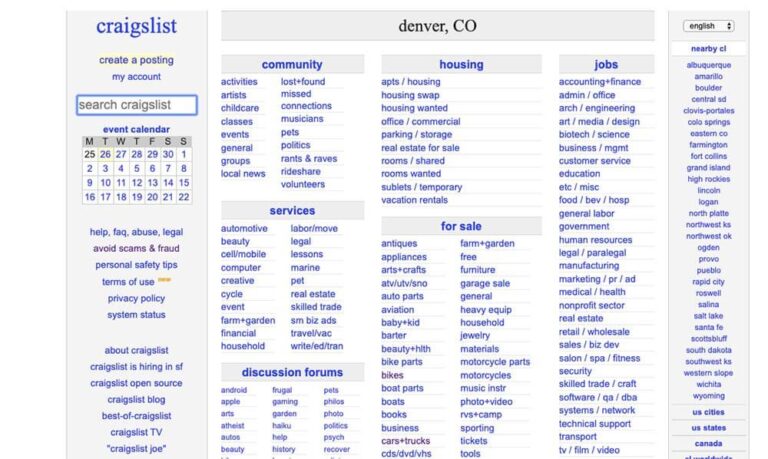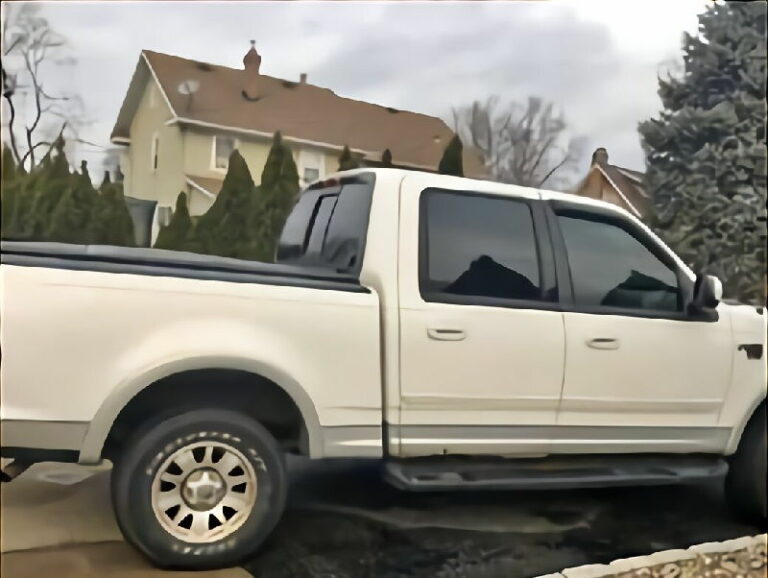What Is The Sq Ft Of A 26′ Truck? Unpacking the Dimensions for Your Next Big Move
What Is The Sq Ft Of A 26′ Truck? Unpacking the Dimensions for Your Next Big Move cars.truckstrend.com
When facing a significant move, planning a large delivery, or needing temporary storage, understanding the capacity of your chosen vehicle is paramount. Among the most popular options for substantial hauling is the 26-foot moving truck. But what exactly does "26-foot" signify, and more importantly, what is the usable square footage of such a vehicle? This comprehensive guide will meticulously break down the dimensions, delve into the critical difference between square feet and cubic feet, and provide invaluable insights to help you maximize every inch of a 26′ truck.
Knowing the square footage (and cubic footage) of a 26′ truck isn’t just a number; it’s the foundation for efficient packing, accurate budgeting, and a stress-free experience. It helps you determine how many boxes you’ll need, whether all your furniture will fit, and ultimately, if this truck size is the right fit for your specific needs. Let’s unpack the dimensions.
What Is The Sq Ft Of A 26′ Truck? Unpacking the Dimensions for Your Next Big Move
Understanding Truck Dimensions: More Than Just Length
Before calculating square footage, it’s crucial to understand how truck dimensions are typically measured. A "26-foot truck" refers to the length of its cargo box, not the entire vehicle from bumper to bumper. The overall length of the truck will be significantly longer due to the cab and engine.
The interior of a standard 26-foot moving truck is essentially a large, rectangular box. To determine its square footage, we need two primary measurements: its length and its width. While the length is given (26 feet), the width can vary slightly between manufacturers but generally hovers around a common standard.
Calculating the Square Footage of a 26′ Truck
The square footage of a truck’s cargo area refers to the total floor space available for loading. It’s calculated by multiplying the length of the cargo area by its width.
For a typical 26-foot moving truck:
- Cargo Box Length: Approximately 26 feet
- Cargo Box Width (Interior): Approximately 8 feet (or 96 inches)

Let’s do the math:
Square Footage (Sq Ft) = Length × Width
Sq Ft = 26 feet × 8 feet = 208 square feet
Therefore, a standard 26′ truck offers approximately 208 square feet of floor space. This measurement is particularly useful for visualizing how many items can be placed side-by-side or how much floor space your larger furniture items will occupy.
Important Note on Usable Space: While 208 sq ft is the theoretical maximum, actual usable square footage might be slightly less due to factors like wheel wells intruding into the cargo space, a small bulkhead area near the cab, or the space required for a loading ramp. Always factor in a small buffer for these realities.
Beyond Square Footage: The Critical Role of Cubic Feet
While square footage tells you about the floor space, it doesn’t account for the vertical dimension – how high you can stack items. For moving and storage, cubic footage (volume) is often a more critical measurement because it represents the total capacity of the truck.
To calculate cubic footage, you multiply the square footage by the interior height of the cargo box.
The average interior height of a 26-foot truck’s cargo area is typically around 8.5 feet.
Let’s calculate the cubic footage:
Cubic Footage (Cu Ft) = Square Footage × Height
Cu Ft = 208 square feet × 8.5 feet = 1,768 cubic feet
So, a 26-foot truck provides approximately 1,768 cubic feet of usable volume. This figure is vital for understanding how much furniture, boxes, and other belongings you can truly fit inside, as it encourages you to think vertically, not just horizontally.
Why Cubic Feet Matters More for Moving:
Imagine you have a large refrigerator and a tall dresser. While they might take up a similar amount of floor space (square footage), their different heights mean they’ll occupy vastly different amounts of volume within the truck. Maximizing vertical space through smart stacking is key to fitting everything into a 26′ truck.
Practical Applications and Benefits of Knowing Your Dimensions
Understanding the square footage and cubic footage of a 26′ truck offers numerous practical benefits:
-
Accurate Load Estimation for Moving:
- A 26′ truck is generally recommended for moving a 3-5 bedroom home, large apartments, or carrying the contents of a substantial office. Knowing the cubic footage helps you visualize if all your belongings will fit in one trip, potentially saving you money on multiple rentals or professional movers.
- It allows you to compare your inventory (estimated cubic feet of your belongings) against the truck’s capacity.
-
Efficient Logistics and Shipping:
- For businesses, knowing the exact dimensions and volume helps in planning freight, calculating shipping costs (often based on volume or weight), and optimizing delivery routes.
- It assists in determining the number of pallets that can fit or the amount of bulk goods that can be transported.
-
Comparing to Storage Units:
- If you’re considering temporary storage, knowing the truck’s dimensions helps you choose an appropriately sized storage unit. A 26′ truck’s capacity is roughly equivalent to a 10’x20′ or 10’x25′ storage unit, depending on how densely items are packed.
-
Budgeting and Planning:
- Having a clear idea of the truck’s capacity can prevent overspending on a truck that’s too large or underspending on one that’s too small, leading to multiple trips and increased fuel costs.
- It also helps in estimating the number of moving boxes, packing supplies, and moving equipment (dollies, furniture pads) you’ll need.
Maximizing Space in a 26′ Truck: Actionable Insights
With 1,768 cubic feet at your disposal, a 26′ truck offers significant space, but utilizing it effectively requires strategy.
- Pack Smart, Pack Uniformly: Use boxes of similar sizes whenever possible. This makes stacking easier and creates fewer wasted gaps. Label all boxes clearly.
- Heavy Items First, Low and Centered: Load your heaviest items (appliances, large furniture, heavy boxes) on the floor, towards the front of the truck (closest to the cab). This helps with weight distribution and stability.
- Disassemble Furniture: Take apart beds, tables, and desks. Wrap pieces individually. This reduces their footprint and makes them easier to maneuver.
- Think Vertically: Stack boxes and items as high as possible, creating stable columns. Use dressers and wardrobes as "towers" to build around.
- Fill All Gaps: Use soft items like blankets, pillows, and clothing to fill any voids between larger items. This prevents shifting during transit.
- Protect Your Valuables: Use moving blankets, stretch wrap, and furniture pads to protect items from scratches and damage.
- Leave an Aisle (Optional but Recommended): If possible, try to leave a narrow pathway to the back of the truck for easier access to items or to adjust the load if needed.
- Secure Your Load: Use tie-downs and rope to secure items to the truck’s interior walls. This prevents shifting and potential damage during turns or sudden stops.
Challenges and Important Considerations
While powerful, a 26′ truck comes with its own set of considerations:
- Usable Space vs. Advertised Space: As mentioned, wheel wells and the bulkhead can slightly reduce the actual usable area. Always account for this when planning.
- Weight Limits (GVWR): Every truck has a Gross Vehicle Weight Rating (GVWR), which is the maximum total weight of the truck plus its cargo. While a 26′ truck has substantial volume, it also has a weight limit (typically around 10,000-14,000 lbs payload capacity, depending on the model). It’s possible to "cube out" (fill the volume) before "weighing out," but it’s essential to be mindful of heavy items like books, weights, or tools.
- Driving Experience: A 26′ truck is a large vehicle. It requires more space for turns, longer braking distances, and careful navigation, especially in urban areas or tight driveways. Be aware of bridge clearances and low-hanging branches.
- Fuel Efficiency: These trucks are not known for their fuel economy. Factor in significant fuel costs for long-distance moves.
- Rental Company Variations: While generally similar, slight differences in interior dimensions (width or height) can exist between rental companies like U-Haul, Penske, and Budget. It’s always best to check the specific dimensions provided by your chosen rental agency.
Sample Rental Price Estimates for a 26′ Truck
The cost of renting a 26′ truck can vary widely based on several factors, including the rental company, pickup and drop-off locations, rental duration, time of year (peak season vs. off-peak), and additional services (insurance, moving supplies). The square footage itself does not have a "price," but it’s part of the overall value proposition of the rental.
Here’s a sample price table. Please note these are estimates only and should not be taken as definitive quotes. Always obtain a direct quote from the rental provider.
| Category | Estimated Cost Range (Local Move) | Estimated Cost Range (One-Way Move) | Notes |
|---|---|---|---|
| Base Rental Fee | $39.99 – $129.99 per day | $1,500 – $3,500+ (flat rate) | Local moves often have mileage fees. One-way rates vary significantly by distance and demand. |
| Mileage Fee | $0.69 – $0.99 per mile | Often included in one-way flat rate | Applicable to local rentals. |
| Fuel Costs | Varies (Truck holds 50-60 gallons) | Varies (Truck holds 50-60 gallons) | Expect 8-10 MPG. Significant expense for long distances. |
| Insurance (Optional) | $15 – $70 per day | $100 – $300+ (for trip) | Highly recommended. Covers damage to truck, cargo, or third parties. |
| Environmental Fee | $1.00 – $5.00 | $1.00 – $5.00 | Small, often mandatory fee. |
| Equipment Rental | Dollies, pads: $5-$20 each | Dollies, pads: $5-$20 each | Moving blankets, hand trucks, furniture dollies. |
| Sales Tax | Varies by state/locality | Varies by state/locality | Added to total cost. |
| Total Estimated Cost | $100 – $300+ (Local Day) | $1,800 – $4,000+ (One-Way) | These are highly variable estimates. Always get a direct quote! |
Tips for Getting the Best Price:
- Book in advance, especially during peak moving season (summer, end of month).
- Be flexible with your dates if possible.
- Look for discounts or promotions.
- Return the truck clean and with the same fuel level as when you picked it up to avoid extra charges.
Frequently Asked Questions (FAQ)
Q: Is 26 feet the actual cargo length of the truck?
A: Yes, "26 feet" typically refers to the interior length of the cargo box from the back of the cab to the rear door. The overall truck length is longer.
Q: How much can a 26′ truck hold in terms of bedrooms?
A: A 26′ truck is generally recommended for moving a 3-5 bedroom home, a large apartment, or the contents of a small office. This is an estimate and depends heavily on the amount of furniture, number of boxes, and efficiency of packing.
Q: What’s the difference between square feet and cubic feet?
A: Square feet (Sq Ft) measures the flat floor area (Length x Width). Cubic feet (Cu Ft) measures the total volume (Length x Width x Height), which is crucial for understanding how much you can stack inside the truck.
Q: Are all 26′ trucks the same size inside?
A: While they are all around 26 feet long, there can be slight variations in interior width and height between different rental companies (e.g., U-Haul, Penske, Budget). Always check the specific dimensions provided by the company you’re renting from.
Q: What is the average height of a 26′ truck’s cargo area?
A: The interior height of a 26′ truck’s cargo area is typically around 8.5 feet (102 inches).
Q: Can I drive a 26′ truck with a regular driver’s license?
A: In most U.S. states and Canada, a standard Class D (or equivalent) driver’s license is sufficient to operate a 26′ moving truck for personal use, as long as its Gross Vehicle Weight Rating (GVWR) is under 26,001 lbs, which is usually the case for consumer rental trucks. However, always verify the specific requirements in your state or province.
Q: What about the weight limit of a 26′ truck?
A: While the truck has significant cubic footage, it also has a payload weight limit, typically ranging from 10,000 to 14,000 pounds. It’s important to be mindful of very heavy items to avoid exceeding this limit.
Conclusion
The 26-foot moving truck is a formidable vehicle designed for substantial hauling needs. By understanding that it offers approximately 208 square feet of floor space and a generous 1,768 cubic feet of total volume, you gain the critical knowledge required for effective planning. This insight empowers you to estimate loads, optimize packing strategies, budget accurately, and ultimately, execute a more efficient and less stressful move or transport operation. Whether you’re relocating a family home or managing business logistics, a thorough understanding of a 26′ truck’s dimensions is your first step towards success.





